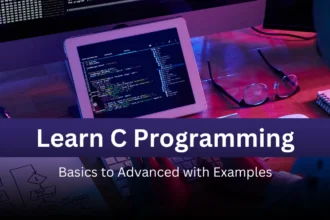Top Spring Boot Interview Questions and Answers
Preparing for a Spring Boot interview? In this article, we have covered the Top 30 Spring Boot interview questions with detailed answers. From understanding the basics of Spring Boot to exploring advanced concepts, our comprehensive list of questions will help you confidently tackle any interview. Whether you’re a beginner or an experienced developer, these questions and answers will enhance your knowledge and give you the edge you need in your next interview. Dive in and get ready to ace your Spring Boot interview!
Spring Boot is an open-source framework designed to simplify the development of standalone, production-ready Spring applications. By providing a set of conventions and tools, Spring Boot eliminates the need for extensive configuration, allowing developers to create and deploy microservices quickly and efficiently. With built-in features like embedded servers, auto-configuration, and a robust ecosystem of plugins, Spring Boot streamlines the process of building scalable and maintainable Java applications, making it a popular choice for modern software development.
Basic Spring Boot Interview Questions
Q.1: What is Spring Boot and what are its advantages?
Spring Boot is a framework from the larger Spring ecosystem that simplifies the development of new Spring applications through convention over configuration. It is designed to get you up and running as quickly as possible, with minimal upfront configuration of Spring.
Advantages:
- Auto-configuration: Automatically configures Spring and third-party libraries whenever possible.
- Standalone: Allows applications to run independently without relying on an external web server.
- Opinionated: Provides out-of-the-box configurations to simplify project setup.
- Production-ready: Offers built-in features such as metrics, health checks, and externalized configuration.
- Microservice-ready: Ideal for building microservices due to its embedded server support and environment-based configuration.
Q.2: How do you create a basic Spring Boot application?
To create a basic Spring Boot application:
- Setup: Use Spring Initializr website to generate a basic project structure.
- Choose Dependencies: Add relevant dependencies like Spring Web, Thymeleaf, or Spring Data JPA.
- Generate Project: Download the generated ZIP file and import it into your IDE.
- Create Application Class: Write a main class annotated with
@SpringBootApplication. - Run Application: Run the application as a Java application from your IDE or use Maven/Gradle commands.
Q.3: What is the purpose of the @SpringBootApplication annotation?
The @SpringBootApplication annotation is a convenience annotation that adds all of the following:
- @Configuration: Tags the class as a source of bean definitions for the application context.
- @EnableAutoConfiguration: Tells Spring Boot to start adding beans based on classpath settings, other beans, and various property settings.
- @ComponentScan: Tells Spring to look for other components, configurations, and services in the specified package, allowing it to find and register classes automatically.
Q.4: Explain how Spring Boot auto-configuration works.
Spring Boot auto-configuration attempts to automatically configure your Spring application based on the jar dependencies that you have added. It uses conditions to check which auto-configuration classes should be applied. For example, if you have spring-webmvc on your classpath, it automatically configures dispatcher servlet, resolver, and view controllers needed to develop a web application.
Q.5: What are Spring Profiles and how would you use them?
Spring Profiles provide a way to segregate parts of your application configuration and make it available only in certain environments. Each profile can be activated to use specific configurations through the spring.profiles.active environment property.
Usage:
- Define beans for specific profiles with @Profile(“dev”), @Profile(“prod”).
- Set in application.properties or through JVM parameters which profiles are active.
Q.6: How does Spring Boot handle database migrations?
Spring Boot can integrate with database migration tools like Flyway or Liquibase. These tools can be added as dependencies in your Spring Boot project. Spring Boot automatically runs them on application startup, applying any pending migrations to the database schema.
Q.7: What embedded servers does Spring Boot support and how do you choose one?
Spring Boot supports several embedded servers: Tomcat (default), Jetty, and Undertow. You can choose one by including the appropriate starter dependency in your project (spring-boot-starter-tomcat, spring-boot-starter-jetty, spring-boot-starter-undertow). Spring Boot auto-configures the chosen server.
Q.8: What is the role of the application.properties file in a Spring Boot application?
The application.properties or application.yml file is used for configuring parameters in a Spring Boot application. These files allow you to externalize configuration, making your code environment-independent and easier to manage with properties for databases, external services, and more.
Q.9: How can you create a custom Spring Boot starter? What are its components?
A custom Spring Boot starter is a way to encapsulate auto-configuration classes, resource files, and dependencies into a single reusable package. Components include:
- Auto-configuration class: Configures beans and settings conditionally.
- Properties class: Defines properties to be set in the
application.properties. - starter dependencies: Libraries needed for the auto-configuration to work.
- Resources: Any scripts or metadata included in the starter.
Q.10: Explain how Spring Boot simplifies dependency management.
Spring Boot simplifies dependency management by providing a set of managed dependencies (starter dependencies) which are tested and integrated to work together. This reduces the need for developers to specify and manage individual versions of each dependency, avoiding conflicts and reducing build specification complexity.
Intermediate Spring Boot Interview Questions
Q.11: What is the Actuator in Spring Boot and what features does it provide?
Spring Boot Actuator is a sub-project of Spring Boot that adds several production-grade services to your application with little effort on your part. It provides features such as:
- Health checks: It can show application health information (like database status, disk space, custom checks).
- Metrics collection: It provides detailed metrics about the performance of your application (requests, system health, etc.).
- HTTP tracing: It shows trace information for HTTP requests.
- Audit events: It can log and view audit events such as user login/logout.
- Application info: It can display general information about the application, its environment, etc. These features are mainly accessed through HTTP endpoints or JMX beans.
Q.12: How do you secure a Spring Boot application using Spring Security?
To secure a Spring Boot application using Spring Security:
- Add Dependencies: Include Spring Security starter in your project.
<dependency>
<groupId>org.springframework.boot</groupId>
<artifactId>spring-boot-starter-security</artifactId>
</dependency>- Configure Security: Customize security settings by extending
WebSecurityConfigurerAdapterand overriding its methods to configure authentication and authorization.
@Configuration
public class SecurityConfig extends WebSecurityConfigurerAdapter {
@Override
protected void configure(HttpSecurity http) throws Exception {
http
.authorizeRequests()
.antMatchers("/", "/home").permitAll()
.anyRequest().authenticated()
.and()
.formLogin()
.loginPage("/login")
.permitAll()
.and()
.logout()
.permitAll();
}
}- User Detail Service: Implement or customize user details according to your application needs, often by using a database or in-memory authentication.
Q.13: Describe how to handle exceptions in Spring Boot.
In Spring Boot, exceptions can be handled globally using @ControllerAdvice classes along with @ExceptionHandler methods. This approach allows you to handle specific exceptions across the whole application, returning custom responses or views:
@ControllerAdvice
public class GlobalExceptionHandler {
@ExceptionHandler(value = Exception.class)
public ResponseEntity<Object> handleGenericException(Exception ex, WebRequest request) {
return new ResponseEntity<>("Error: " + ex.getMessage(), HttpStatus.INTERNAL_SERVER_ERROR);
}
}
Q.14: What is the difference between @RequestParam and @PathVariable in Spring MVC?
@RequestParamis used to extract query parameters from the URL, e.g.,/api?userId=123.@PathVariableis used to extract values from the URI path itself, used for RESTful services, e.g.,/api/users/123.
@GetMapping("/api")
public String getByParam(@RequestParam(name = "userId") String userId) {
return "User ID: " + userId;
}
@GetMapping("/api/users/{userId}")
public String getByPath(@PathVariable("userId") String userId) {
return "User ID: " + userId;
}
Q.15: How can you externalize configuration in Spring Boot for different environments?
In Spring Boot, configuration can be externalized using application.properties or application.yml files. You can create different profiles for different environments (e.g., application-dev.yml, application-prod.yml) and activate the appropriate one using the spring.profiles.active environment property.
Q.16: Explain the usage of @Transactional in Spring Boot.
@Transactional annotation in Spring Boot is used to declare that a method should be executed within a transaction context. When the annotated method is called, Spring starts a new transaction if none exists, and the method execution is wrapped in this transaction. If the method completes successfully, the transaction is committed; if an exception is thrown, it is rolled back.
Q.17: What are Spring Data JPA and the repository pattern? How do you use them in Spring Boot?
Spring Data JPA is a part of the larger Spring Data family that makes it easier to implement JPA based repositories. This module deals with enhanced support for JPA based data access layers. It makes it easier to build Spring-powered applications that use data access technologies.
- Repository pattern: Abstracts the data layer, providing CRUD operations on entities.
- Usage: Define an interface extending
CrudRepositoryorJpaRepository, and Spring automatically implements this interface at runtime.
public interface UserRepository extends JpaRepository<User, Long> {}Q.18: How can you implement caching in a Spring Boot application?
To implement caching in a Spring Boot application, you can use the Spring Framework’s cache abstraction, which Spring Boot automatically configures when you add the appropriate dependencies (spring-boot-starter-cache). Annotate methods with @Cacheable to indicate results should be cached:
@Cacheable("users")
public User getUserById(String id) {
// method body
}Q.19: Explain how you can integrate third-party services into a Spring Boot application.
Integrating third-party services into a Spring Boot application usually involves:
- Adding client libraries as dependencies in your build configuration.
- Configuration: Setting up connection details in
application.propertiesorapplication.yml. - Service Beans: Creating service beans to handle the API calls.
- Using RestTemplate or WebClient for REST API communication.
Q.20: What is Spring Boot’s approach to handling asynchronous operations?
Spring Boot supports asynchronous operations through the use of the @Async annotation. You can enable it by adding @EnableAsync to your configuration. Methods annotated with @Async run in a separate thread and can return a Future, CompletableFuture, or ListenableFuture.
@Async
public CompletableFuture<User> findUser(String user) {
return CompletableFuture.completedFuture(new User());
}
Advanced Spring Boot Interview Questions
Q.21: Discuss how microservices architecture is supported by Spring Boot.
Spring Boot provides extensive support for building microservices:
- Independence: Allows the creation of stand-alone applications with their own runtime environments, packaged as JARs with an embedded web server.
- Configuration Management: Integrates seamlessly with Spring Cloud Config for externalized, environment-specific configurations.
- Service Discovery: Can be integrated with tools like Eureka or Consul, allowing services to discover and communicate with each other without hard-coding URLs.
- Resilience: Integrates with libraries like Resilience4j to provide circuit breakers and other resilience patterns.
- Gateway: Supports API gateways with Spring Cloud Gateway, providing a simple, effective way to route to APIs and provide cross-cutting concerns like security, monitoring, and resiliency.
Q.22: Explain the concept of Spring Boot starters and list some common starters you might use.
Spring Boot Starters are a set of convenient dependency descriptors that you can include in your application to enable specific functionality. They simplify the Maven configuration and provide a quick way to set up Spring Boot. Common starters include:
- spring-boot-starter-web: For building web applications using Spring MVC. Includes RESTful application support.
- spring-boot-starter-data-jpa: For using Spring Data JPA with Hibernate.
- spring-boot-starter-security: For applying Spring Security.
- spring-boot-starter-test: For testing Spring Boot applications with libraries like JUnit, Hamcrest, and Mockito.
- spring-boot-starter-actuator: Provides production-ready features to help monitor and manage the application.
Q.23: How do you manage transactions in a distributed system with Spring Boot?
In distributed systems, managing transactions can be challenging due to the involvement of multiple services. Spring Boot can manage distributed transactions using:
- JTA (Java Transaction API) with a transaction manager like Atomikos or Bitronix, which coordinates transactions across multiple XA resources.
- Spring Cloud Stream for event-driven architectures that use transactions in messaging systems.
- SAGA pattern, an approach where each service in the system manages its local transactions and coordinates with other services through asynchronous messages.
Q.24: What strategies would you use to secure microservices built with Spring based on Spring Boot?
To secure microservices built with Spring Boot:
- Authentication and Authorization: Utilize Spring Security to secure endpoints. Implement OAuth2 or JWT for stateless security.
- API Gateways: Use Spring Cloud Gateway or similar for centralized authentication and to enforce security policies.
- Encryption: Apply HTTPS everywhere and encrypt sensitive data both at rest and in transit.
- Limit Dependencies: Regularly update dependencies and limit the use of unnecessary libraries to reduce vulnerabilities.
Q.25: Explain the role of WebFlux in Spring Boot.
WebFlux is a module in Spring Framework 5 that implements reactive programming principles to support non-blocking, asynchronous event-driven web applications. It supports back pressure and runs on servers such as Netty, Undertow, and Servlet 3.1+ containers. In Spring Boot, WebFlux can be enabled by using the spring-boot-starter-webflux starter. It is suitable for applications that require high scalability and responsive operations.
Q.26: How do you monitor and manage a Spring Boot application in a production environment?
To monitor and manage Spring Boot applications in production:
- Spring Boot Actuator: Utilize its endpoints to monitor app health, metrics, info, and more.
- Logging: Integrate with logging frameworks like Logback or Log4J2 and external systems like ELK or Splunk.
- Performance Monitoring Tools: Use tools like Prometheus and Grafana or commercial solutions like Dynatrace or New Relic.
- Tracing: Implement distributed tracing with Spring Cloud Sleuth and Zipkin to trace requests across service boundaries.
Q.27: Discuss the use of Reactive Programming in Spring Boot.
Reactive Programming in Spring Boot is supported through the Spring WebFlux module, enabling applications to handle more concurrent users and use resources more efficiently by adopting an asynchronous, non-blocking, event-driven approach to handle the requests. This is particularly useful for applications that communicate with external services or databases that have high latency.
Q.28: What are the best practices for using Docker with Spring Boot applications?
- Dockerfile Optimization: Use multi-stage builds to minimize image size. Base your image on a slim or alpine version.
- Configuration: Externalize configuration using environment variables or configuration files that can be added at runtime.
- Layering: Structure your Dockerfile to leverage Docker’s caching mechanism. Place commands that change less frequently at the top.
- Security: Use non-root users to run your applications inside containers.
Q.29: How can Spring Boot be used with message brokers like Kafka or RabbitMQ?
Spring Boot can integrate with message brokers like Kafka and RabbitMQ using Spring Integration or Spring Cloud Stream, which abstracts message-broker communication:
- Spring Kafka and Spring RabbitMQ starters can be used to quickly setup configurations.
- Publish and subscribe to messages using template classes provided by the Spring framework that handle the complexities of producing and consuming messages.
Q.30: What are some common performance issues in Spring Boot applications and how would you address them?
Common performance issues in Spring Boot applications include:
- Memory Leaks: Use tools like JProfiler or VisualVM to analyze and identify leaks.
- Database Bottlenecks: Optimize query performance; use connection pools and second-level caches.
- Inefficient Application Configuration: Profile and tune Spring Boot applications, reviewing auto-configuration and manually configuring beans as necessary.
- System Overload: Implement backpressure and rate-limiting strategies to manage load and ensure stability.







